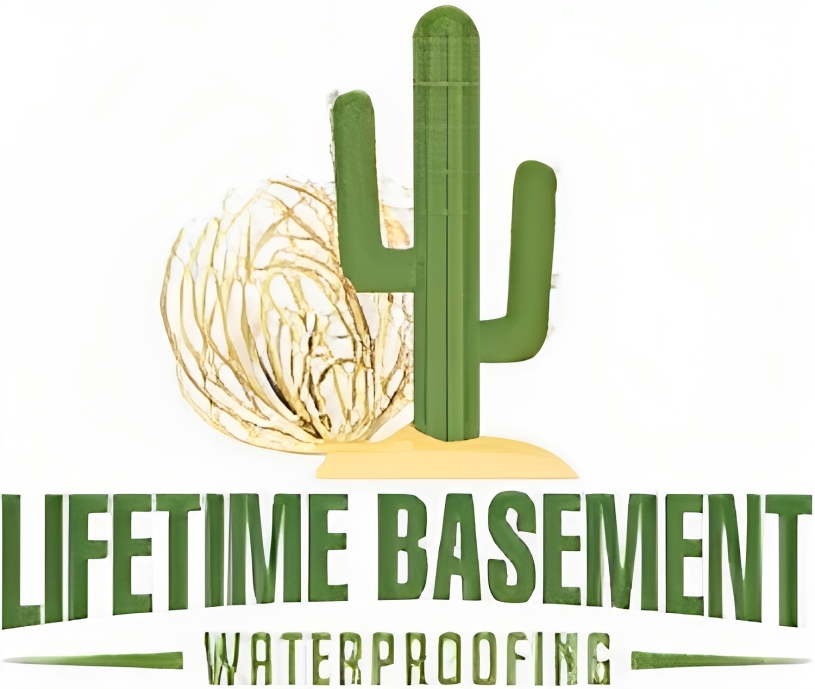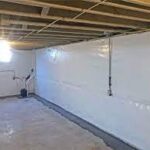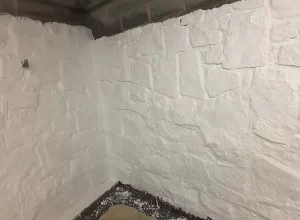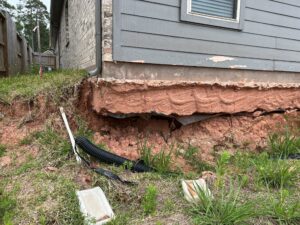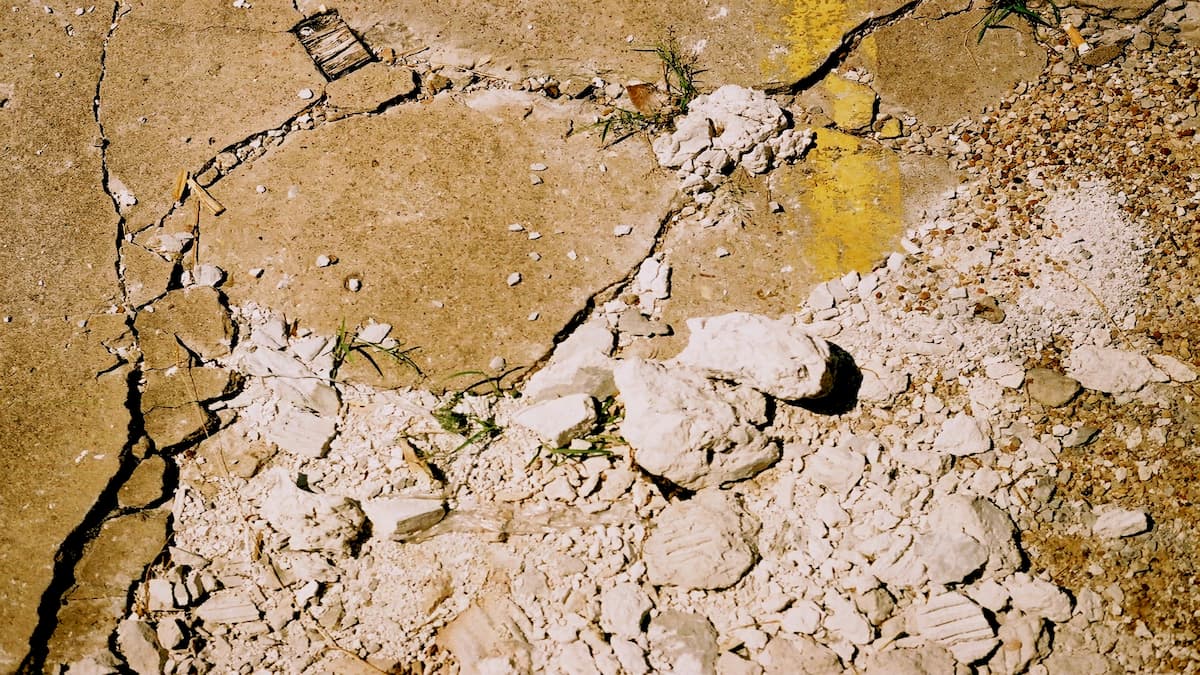
If you see wall cracks, uneven floors, doors sticking, or bowing walls in your older home, these are vital signs of foundation damage that needs immediate attention. Issues like a leaning chimney, sinking porch, moisture in the basement, and exterior brick cracks also indicate serious problems that shouldn’t be ignored. Acting promptly on these warning signs is essential for preventing further deterioration and costly repairs.
Key Takeaways
- Vertical and horizontal wall cracks indicate foundation issues.
- Uneven floors and sloping indicate settling or moisture damage.
- Sticking doors signal shifting walls and foundation problems.
- Bowing walls with diagonal cracks compromise structural integrity.
- Leaning chimney and sinking porch suggest foundation settlement.
Wall Cracks
If you notice wall cracks in your older home, it may indicate potential foundation damage. These cracks aren’t just cosmetic issues; they could be a sign of a more serious underlying problem. The walls of your home bear the weight of the entire structure, so any damage to the foundation can manifest as cracks in the walls.
Vertical cracks in your walls are often a result of normal settling, especially in older homes. However, horizontal or stair-step cracks can be more concerning. Horizontal cracks are typically caused by lateral pressure from the soil surrounding the foundation, which can lead to bowing or leaning walls. Stair-step cracks, on the other hand, are often a sign of differential settlement, meaning one part of the foundation is sinking faster than another.
It’s essential to monitor these cracks and see if they’re growing or changing over time. If you notice that cracks are widening, doors are sticking, or windows are becoming difficult to open or close, it’s time to call a professional to assess the situation. Ignoring these warning signs can lead to further structural damage and costly repairs down the line.
Uneven Floors
Uneven floors in older homes can be a clear indicator of underlying foundation issues that require immediate attention. If you notice sloping or sagging floors in your home, it’s important to investigate further to determine the cause and address it promptly.
Here are some key reasons why uneven floors may signal foundation problems:
- Settling Foundation: Over time, the soil beneath your home can shift, causing the foundation to settle unevenly and leading to floor slanting or sloping.
- Water Damage: Excess moisture in the soil around your foundation can weaken the supports, causing the floors above to become uneven as the foundation shifts.
- Termite Infestation: Termites can wreak havoc on wooden structures, including floor joists, leading to uneven floors as they eat away at the support beams.
- Poor Construction: In some cases, uneven floors may be the result of poor initial construction, where inadequate support or materials were used, causing structural issues over time.
Ignoring uneven floors can result in further damage to your home’s foundation and overall structure. If you observe this warning sign, it’s advisable to consult a professional contractor or structural engineer to assess the situation and recommend the appropriate repairs.
Doors Sticking
When you find that doors in your older home are sticking, it could be a sign of underlying foundation issues that warrant investigation. Sticking doors can be a frustrating and common problem that many homeowners face, but it’s important to recognize that in older homes, this issue might be more than just a simple inconvenience.
The foundation of your home plays a pivotal role in maintaining its structural integrity. When the foundation is compromised, it can cause the walls to shift and settle unevenly, which in turn can lead to doors sticking. As the foundation moves, it can create pressure on the door frames, causing them to become misaligned and making it difficult for doors to open and close smoothly.
If you notice that doors in your home are sticking, it’s crucial to take action promptly. Ignoring this issue can lead to further damage to your home’s foundation and overall structure. Contacting a professional foundation inspector to assess the situation is paramount in determining the root cause of the problem and implementing the necessary repairs.
Bowing Walls
Bowing walls indicate a serious structural issue that demands immediate attention to prevent further damage to your home. If you notice any walls in your older home starting to bow or curve inward, it’s vital to address this problem promptly. Here are some key points to keep in mind:
- Causes: Bowing walls can be triggered by various factors, such as poor construction, hydrostatic pressure from the soil surrounding the foundation, or the natural settling of the house over time.
- Warning Signs: Look out for cracks in the walls, especially diagonal cracks near the corners of windows and doors. These cracks may signal that the walls are bowing and require urgent repair.
- Impact on Structural Integrity: Bowing walls can compromise the structural integrity of your home, leading to more severe issues if left unattended. Ignoring this warning sign can result in costly repairs down the line.
- Professional Inspection: It’s essential to consult a foundation repair specialist or structural engineer to assess the extent of the damage and recommend the appropriate course of action. They can provide expert guidance on how to address the bowing walls and prevent further deterioration of your home’s foundation.
Settling Foundation
If you notice cracks in your home’s walls that aren’t associated with bowing, it may indicate a settling foundation issue that requires prompt attention. Settling foundations can occur in older homes due to various reasons like soil movement, poor construction, or water damage. When the foundation settles unevenly, it can lead to cracks in the walls, ceilings, or floors of your home. These cracks may start small but can worsen over time, causing structural damage if not addressed.
One common sign of a settling foundation is doors and windows that no longer close properly. You may notice gaps around the frames or difficulty in opening and closing them smoothly. Additionally, sloping floors or gaps between the floor and baseboards can also indicate foundation settlement. If you see these signs, it’s crucial to have a professional inspect your foundation to determine the extent of the damage and recommend the necessary repairs.
Ignoring a settling foundation can lead to more severe issues down the line, such as further structural damage, plumbing problems, or even potential safety hazards. Addressing foundation problems early can help prevent costly repairs in the future and guarantee the stability and safety of your home.
Gaps Around Windows
Noticing gaps around windows in your home could be an indication of underlying foundation issues that require immediate attention. These gaps can signal potential problems with the structural integrity of your house. Here are some reasons why you shouldn’t ignore these warning signs:
- Water Infiltration: Gaps around windows can allow water to seep into your home, leading to water damage, mold growth, and potential health hazards.
- Energy Loss: Spaces around windows can cause drafts, making it harder to regulate the temperature inside your home. This can result in higher energy bills as your heating and cooling systems work harder to maintain a comfortable environment.
- Pest Entry: Small openings around windows provide easy access for insects and rodents to enter your home. This can lead to infestations and damage to your property.
- Structural Damage: Window gaps may indicate that your house is settling unevenly, which can put stress on the overall structure. Ignoring these gaps could lead to more severe foundation issues over time.
If you notice gaps around your windows, it’s important to address them promptly to prevent further damage and guarantee the safety and stability of your home.
Chimney Leaning
Detecting a chimney leaning in an older home can be an important sign of underlying structural issues that necessitate immediate evaluation and potential repairs. When you notice that your chimney is visibly tilting or leaning to one side, it could indicate a serious problem with the foundation of your home. The chimney is a heavy structure, and any deviation from its vertical alignment may suggest that the foundation is unable to support its weight properly.
Several reasons could cause a chimney to lean in an older home. One common cause is foundation settlement, where the soil beneath the foundation shifts or compresses unevenly, leading to an imbalance in support. Poor construction practices or materials used during the chimney’s original installation could also contribute to its leaning over time. Additionally, water damage from leaks or poor drainage around the chimney can weaken the foundation and cause it to tilt.
Ignoring a leaning chimney can result in further damage to your home’s structure and potentially pose safety risks. Hence, if you observe your chimney leaning, it’s important to consult a professional foundation repair specialist or structural engineer to assess the situation and recommend appropriate solutions. Addressing the underlying foundation issues promptly can help prevent more extensive and costly repairs in the future.
Sinking Porch or Stoop
When assessing an older home for foundation damage, a sinking porch or stoop can indicate potential structural issues that need immediate attention. If you observe your porch or stoop sinking, it’s important to address the problem promptly to prevent further damage to your home’s foundation.
Here are some signs to look out for:
- Visible Sloping: Step back and visually inspect your porch or stoop. If you notice a visible slope or tilt, it could be a sign of foundation settlement causing the structure to sink unevenly.
- Cracks: Check for cracks in the concrete or masonry of your porch or stoop. Cracks that are large or expanding may indicate a more serious foundation issue.
- Gaps: Look for spaces between the porch or stoop and the main structure of the house. These gaps can indicate that the foundation has shifted, causing the porch to separate from the rest of the home.
- Water Pooling: Pay attention to any water pooling around the base of the porch or stoop. Poor drainage due to foundation issues can lead to water accumulation, worsening the problem.
Addressing a sinking porch or stoop promptly can help prevent further damage to your home’s foundation and guarantee the structural integrity of your property. If you notice any of these signs, consider contacting a professional foundation repair specialist for an assessment.
Moisture in Basement
If you find moisture in your basement, it could be a sign of important foundation issues that require attention. Excess moisture in the basement can indicate problems with the foundation, such as cracks or poor drainage, which may lead to more severe issues if not addressed promptly.
One common cause of basement moisture is water seepage through cracks in the foundation. These cracks can allow water to infiltrate the basement, leading to dampness and mold growth. Another culprit could be poor soil drainage around the foundation, causing water to accumulate and seep into the basement through the walls.
To determine if the moisture in your basement is related to foundation problems, you can conduct a simple test. Tape a piece of aluminum foil to the wall or floor where you see the moisture, and check it after a few days. If the moisture is on the outside of the foil, it suggests that the issue is condensation, but if it’s on the side facing the wall, it indicates water seepage from the foundation.
Addressing basement moisture promptly is important to prevent further damage to your foundation. Consider installing a dehumidifier, fixing any foundation cracks, improving drainage around your home, and ensuring proper ventilation in the basement to keep moisture levels in check.
Exterior Brick Cracks
Exterior brick cracks are a common warning sign of potential foundation damage in older homes. These cracks can indicate underlying issues that may compromise the structural integrity of your house. Here are some key points to take into account when evaluating exterior brick cracks:
- Crack Size: Pay attention to the width of the cracks. Cracks wider than a quarter of an inch could signify a more serious problem with the foundation.
- Crack Patterns: The direction and pattern of the cracks can provide valuable insights. Horizontal cracks are typically more concerning than vertical cracks and may indicate excessive soil pressure against the foundation.
- Location: Take note of where the cracks are located on your exterior walls. Cracks near windows, doors, or corners are particularly worrisome as they suggest potential foundation settlement.
- Associated Symptoms: Look out for additional signs of foundation issues such as uneven floors, sticking doors or windows, and gaps between the walls and ceiling. These symptoms, coupled with exterior brick cracks, could indicate a larger underlying problem that needs attention.
Frequently Asked Questions
Can Foundation Damage in Older Homes Be Prevented or Mitigated Through Regular Maintenance?
You can prevent or reduce foundation damage in older homes through regular maintenance. Inspect for cracks, guarantee proper drainage, and address issues promptly. Taking proactive steps can help preserve your home’s foundation and prevent costly repairs.
How Can You Differentiate Between Normal Settling and Serious Foundation Damage in an Older Home?
You differentiate between normal settling and serious foundation damage in an older home by monitoring for cracks wider than a quarter inch, doors or windows that stick, and sloping floors. If you notice these signs, consult a professional.
Are There Any Common Misconceptions About Foundation Damage in Older Homes That Homeowners Should Be Aware Of?
When it comes to foundation damage in older homes, misconceptions can lead to costly mistakes. Be cautious of assuming minor cracks are harmless. Get professional inspections to accurately assess any issues and avoid potential problems down the line.
What Are Some Potential Hidden Signs of Foundation Damage That Homeowners May Overlook?
You might miss foundation damage if you disregard subtle signs like doors sticking, cracks in walls, or uneven floors. Pay attention to these indicators to catch issues early and avoid costly repairs.
Is It Possible for Foundation Damage in Older Homes to Worsen Over Time if Left Untreated, and What Are the Potential Consequences of Neglecting Repairs?
If left untreated, foundation damage in older homes can worsen over time. Neglecting repairs may lead to structural instability, cracks in walls, uneven floors, and doors that no longer close properly. Addressing issues promptly is essential.
Conclusion
Lifetime Basement Waterproofing has been Atlanta’s premier basement waterproofing company for over 30 years.
As a family-owned and operated company, we specialize in basement waterproofing and offer expert services in crawlspace encapsulation, exterior foundation waterproofing, foundation crack repair, and drainage strategy for French drains.
When it comes to wet basement repair needs, you can trust Lifetime Basement Waterproofing to safeguard the structural integrity of your home.
